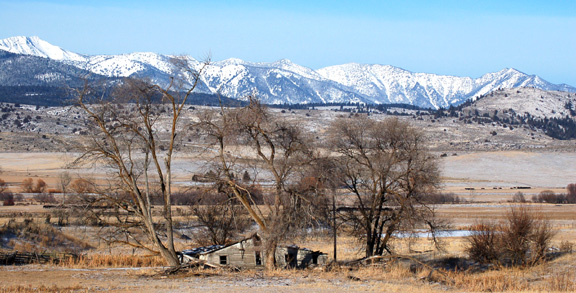Monday, October 31, 2011
7 BILLION AND COUNTING
In This Edition:
- 7 BILLION AND COUNTING (Center for Biological Diversity & World Watch Institute)
- Some Consequences of Teen Pregnancies in Western Industrialized Countries
_____
FREQUENTLY ASKED QUESTIONS: 7 BILLION AND COUNTING
Center for Biological Diversity
How many people are there on the planet, and how has the population grown?
The United Nations predicts the world population will reach 7 billion on October 31, 2011, and continue exploding till its hits 10 billion by century’s end. Global population doubled from 1 billion to 2 billion between 1800 and 1930, then exploded over the past five decades — doubling from 3.5 billion in 1968 to nearly 7 billion now.
How many people will there be at the end of the century?
According to a May 2011 U.N. report, the global human population will likely exceed 10 billion by 2100. This projection is higher than previous estimates, which predicted the population would peak at slightly more than 9 billion in 2050 and then begin to decline.
How does this affect plants and animals?
Population growth has an enormous impact on biodiversity, the suite of plant and animal species that make up our physical world. As the world’s human population grows unsustainably, so do its unyielding demands for water, land, trees and fossil fuels — all of which come at a steep price for other life forms already being forced into remote corners, deprived of food sources or outcompeted by introduced species. Most directly, population growth has led to massive habitat loss, overhunting and interruption of migration.
Is it affecting the rate of species extinction?
Most biologists agree we’re in the midst of the Earth’s sixth mass extinction event. Some have even begun to use the term “Anthropocene” to describe a new period of time on Earth. Species are disappearing up to 1,000 times faster than is typical of the planet’s history. This time, though, it isn’t because of geologic or cosmic forces but unsustainable human population growth.
What are some of the North American species that have already gone extinct because of overpopulation?
They include the woodland bison of West Virginia, Arizona’s Merriam’s elk, the Rocky Mountain grasshopper and Puerto Rico’s Culebra parrot. Each year researchers report discovering more than 15,000 new species around the world; at the same time, more than 90 species are going extinct every day.
How can we stop this?
One person at a time. One of the most important actions we can take is to speak out and speak up. For too long, overpopulation has been ignored by environmental groups and others, largely for political reasons. But at this point the facts can’t be ignored, and there are practical, real-world ways to begin addressing the crisis.
Forty percent of pregnancies are unplanned, and the majority of women in the world do not have access to birth control. These realities are often a result of women not being in decision-making positions.
We can reduce our own population to a sustainable level in a number of ways, including the empowerment of women, education of all people, universal access to birth control and a societal commitment to ensuring that all species are given a chance to live and thrive. These steps will decrease human poverty and overcrowding, raise our standard of living and help sustain the lives of plants and animals everywhere — and with them the natural systems on which our own lives and wellbeing depend.
Isn’t this just a problem for the rest of the world?
No. The United States has the world’s third largest population after China and India. At 2.1 children per woman, the U.S. fertility rate remains the highest among developed nations, which average around 1.6. The current U.S. population exceeds 300 million and is projected to grow 50 percent by 2050. By any ecological measure, we have exceeded our carrying capacity.
Isn’t the problem more about overconsumption?
It’s inextricably connected. Dramatic overconsumption has coincided with the population explosion. Consumption of resources — from land and water to oil, gas and minerals — has played a significant role in the loss of biodiversity around the globe. Reducing consumption is vital to curbing the extinction crisis, and so is stemming unsustainable population growth.
What are Endangered Species Condoms?
In 2010, through a network of more than 5,000 volunteers, the Center for Biological Diversity distributed 350,000 free condoms, packaged in boxes with images of endangered species. Distributed in all 50 states — as well as Canada, Puerto Rico and Mexico — they highlighted how runaway human population growth is driving species extinct at a cataclysmic rate. The Center is giving away 100,000 of these popular condoms in 2011 as part of its 7 Billion and Counting campaign.
You can find out more at our website.
What can I do to help with the population crisis?
Talk. The overpopulation crisis has been exacerbated by social reluctance to discuss problems involving reproduction and differing perceptions of the morality of reproduction. No doubt about it: This is a delicate subject. But it’s also essential that people begin to have the conversation.
Host or attend an event about the 7 billion milestone, endangered species and how to stem overpopulation.
Become one of our volunteer condom distributors.
Write a letter to the editorof your local newspaper and talk with, or write to, your elected representatives. Check out ideas to get you started with our Take-action Toolbox.
Become a member of the Center for Biological Diversity, Join our e-network, sign up for Pop X, our monthly e-newsletter about human population and species extinction, join us on Facebook and learn more on our resources page.
Donate to the Center’s overpopulation campaign so we can continue to expand our innovative overpopulation campaign.
__
As Global Population Surpasses 7 Billion, Two Clear Strategies for a Sustainable Future
Greater reproductive choice and measures to reduce resource consumption and waste are critical to reducing humanity's environmental impact
WASHINGTON - October 31 - As the global population surpasses 7 billion people sometime around the end of October, addressing the challenges associated with a still-growing world population will require a two-pronged response, according to experts with the Worldwatch Institute. The combined measures of empowering women to make their own decisions about childbearing and significantly reducing global consumption of energy and natural resources would move humanity toward rather than further away from environmentally sustainable societies that meet human needs.
. . . .
__
Teenage Childbearing and Long-Term Socioeconomic Consequences: A Case Study in Sweden
. . . .
Results: Compared with Swedish women who first gave birth at ages 20-24, those who were teenage mothers had significantly increased odds of each unfavorable socioeconomic outcome in later life, even after the data were adjusted for family socioeconomic situation and maternal birth cohort. For example, teenage motherhood was positively associated with low educational attainment (odds ratios of 1.7-1.9, depending on the specific age during adolescence when the woman gave birth), with single living arrangements (odds ratios, 1.5-2.3), with high parity (odds ratios, 2.6-6.0), with collecting a disability pension (odds ratios, 1.6-1.9) and with welfare dependency (odds ratios, 1.9-2.6). These trends were usually linear, with the highest odds ratios corresponding to women who had had their first child at the youngest age.
Conclusions: A longitudinal analysis of record-linkage data from Sweden supports the view that childbearing during adolescence poses a risk for socioeconomic disadvantage in later life—even for adolescents from relatively comfortable backgrounds and for those who studied beyond elementary school.
Family Planning Perspectives, 2001, 33(2):70-74
. . . .
__
The Children of Teen Parents
Poverty, inadequate social support, mothers’ lack of education, mothers’ cognitive immaturity, and greater maternal stress have all been suggested as possible factors contributing to poor social and educational outcomes for the children of teen mothers.
__
Social Barriers Faced by Adolescent Parents and Their Children
Howard Spivak, MD; Michael Weitzman, MD
From the Department of Pediatrics, Boston University School of Medicine (Drs Spivak and Weitzman), and the Division of Health Services, Boston University School of Public Health (Dr Weitzman).
ABSTRACT
Pregnancy and childbearing are well recognized as having significant, long-term consequences for teenagers. Recent literature documents an array of negative outcomes for children born to adolescents, with a range of factors identified as contributing to the problems observed in these children. These include (1) the characteristics of those teenagers most likely to become parents, (2) the social and economic consequences of early childbearing, (3) the increased biologic vulnerability of children born to teenagers, and (4) the nature of parenting by teenagers. It has been acknowledged that adolescent parents tend to come from high-risk families, have poor academic achievement, and live in our most disadvantaged communities and therefore, biologic, economic, and behavioral factors contribute to the increased likelihood of teenagers having children who are vulnerable to physical and developmental problems. Teenaged parents face many obstacles to economic and social success, and these further influence the environment in which their children grow up. Adolescents also experience many difficulties in adjusting to parenthood and display a range of suboptimal parenting practices. Whereas some of these factors appear highly resistant to change, others have clear clinical, programmatic, and policy implications.
(JAMA 1987;258:1500-1504)
[I have the article in PDF upon request.]
-
- 7 BILLION AND COUNTING (Center for Biological Diversity & World Watch Institute)
- Some Consequences of Teen Pregnancies in Western Industrialized Countries
_____
FREQUENTLY ASKED QUESTIONS: 7 BILLION AND COUNTING
Center for Biological Diversity
How many people are there on the planet, and how has the population grown?
The United Nations predicts the world population will reach 7 billion on October 31, 2011, and continue exploding till its hits 10 billion by century’s end. Global population doubled from 1 billion to 2 billion between 1800 and 1930, then exploded over the past five decades — doubling from 3.5 billion in 1968 to nearly 7 billion now.
How many people will there be at the end of the century?
According to a May 2011 U.N. report, the global human population will likely exceed 10 billion by 2100. This projection is higher than previous estimates, which predicted the population would peak at slightly more than 9 billion in 2050 and then begin to decline.
How does this affect plants and animals?
Population growth has an enormous impact on biodiversity, the suite of plant and animal species that make up our physical world. As the world’s human population grows unsustainably, so do its unyielding demands for water, land, trees and fossil fuels — all of which come at a steep price for other life forms already being forced into remote corners, deprived of food sources or outcompeted by introduced species. Most directly, population growth has led to massive habitat loss, overhunting and interruption of migration.
Is it affecting the rate of species extinction?
Most biologists agree we’re in the midst of the Earth’s sixth mass extinction event. Some have even begun to use the term “Anthropocene” to describe a new period of time on Earth. Species are disappearing up to 1,000 times faster than is typical of the planet’s history. This time, though, it isn’t because of geologic or cosmic forces but unsustainable human population growth.
What are some of the North American species that have already gone extinct because of overpopulation?
They include the woodland bison of West Virginia, Arizona’s Merriam’s elk, the Rocky Mountain grasshopper and Puerto Rico’s Culebra parrot. Each year researchers report discovering more than 15,000 new species around the world; at the same time, more than 90 species are going extinct every day.
How can we stop this?
One person at a time. One of the most important actions we can take is to speak out and speak up. For too long, overpopulation has been ignored by environmental groups and others, largely for political reasons. But at this point the facts can’t be ignored, and there are practical, real-world ways to begin addressing the crisis.
Forty percent of pregnancies are unplanned, and the majority of women in the world do not have access to birth control. These realities are often a result of women not being in decision-making positions.
We can reduce our own population to a sustainable level in a number of ways, including the empowerment of women, education of all people, universal access to birth control and a societal commitment to ensuring that all species are given a chance to live and thrive. These steps will decrease human poverty and overcrowding, raise our standard of living and help sustain the lives of plants and animals everywhere — and with them the natural systems on which our own lives and wellbeing depend.
Isn’t this just a problem for the rest of the world?
No. The United States has the world’s third largest population after China and India. At 2.1 children per woman, the U.S. fertility rate remains the highest among developed nations, which average around 1.6. The current U.S. population exceeds 300 million and is projected to grow 50 percent by 2050. By any ecological measure, we have exceeded our carrying capacity.
Isn’t the problem more about overconsumption?
It’s inextricably connected. Dramatic overconsumption has coincided with the population explosion. Consumption of resources — from land and water to oil, gas and minerals — has played a significant role in the loss of biodiversity around the globe. Reducing consumption is vital to curbing the extinction crisis, and so is stemming unsustainable population growth.
What are Endangered Species Condoms?
In 2010, through a network of more than 5,000 volunteers, the Center for Biological Diversity distributed 350,000 free condoms, packaged in boxes with images of endangered species. Distributed in all 50 states — as well as Canada, Puerto Rico and Mexico — they highlighted how runaway human population growth is driving species extinct at a cataclysmic rate. The Center is giving away 100,000 of these popular condoms in 2011 as part of its 7 Billion and Counting campaign.
You can find out more at our website.
What can I do to help with the population crisis?
Talk. The overpopulation crisis has been exacerbated by social reluctance to discuss problems involving reproduction and differing perceptions of the morality of reproduction. No doubt about it: This is a delicate subject. But it’s also essential that people begin to have the conversation.
Host or attend an event about the 7 billion milestone, endangered species and how to stem overpopulation.
Become one of our volunteer condom distributors.
Write a letter to the editorof your local newspaper and talk with, or write to, your elected representatives. Check out ideas to get you started with our Take-action Toolbox.
Become a member of the Center for Biological Diversity, Join our e-network, sign up for Pop X, our monthly e-newsletter about human population and species extinction, join us on Facebook and learn more on our resources page.
Donate to the Center’s overpopulation campaign so we can continue to expand our innovative overpopulation campaign.
__
As Global Population Surpasses 7 Billion, Two Clear Strategies for a Sustainable Future
Greater reproductive choice and measures to reduce resource consumption and waste are critical to reducing humanity's environmental impact
WASHINGTON - October 31 - As the global population surpasses 7 billion people sometime around the end of October, addressing the challenges associated with a still-growing world population will require a two-pronged response, according to experts with the Worldwatch Institute. The combined measures of empowering women to make their own decisions about childbearing and significantly reducing global consumption of energy and natural resources would move humanity toward rather than further away from environmentally sustainable societies that meet human needs.
. . . .
__
Teenage Childbearing and Long-Term Socioeconomic Consequences: A Case Study in Sweden
. . . .
Results: Compared with Swedish women who first gave birth at ages 20-24, those who were teenage mothers had significantly increased odds of each unfavorable socioeconomic outcome in later life, even after the data were adjusted for family socioeconomic situation and maternal birth cohort. For example, teenage motherhood was positively associated with low educational attainment (odds ratios of 1.7-1.9, depending on the specific age during adolescence when the woman gave birth), with single living arrangements (odds ratios, 1.5-2.3), with high parity (odds ratios, 2.6-6.0), with collecting a disability pension (odds ratios, 1.6-1.9) and with welfare dependency (odds ratios, 1.9-2.6). These trends were usually linear, with the highest odds ratios corresponding to women who had had their first child at the youngest age.
Conclusions: A longitudinal analysis of record-linkage data from Sweden supports the view that childbearing during adolescence poses a risk for socioeconomic disadvantage in later life—even for adolescents from relatively comfortable backgrounds and for those who studied beyond elementary school.
Family Planning Perspectives, 2001, 33(2):70-74
. . . .
__
The Children of Teen Parents
Poverty, inadequate social support, mothers’ lack of education, mothers’ cognitive immaturity, and greater maternal stress have all been suggested as possible factors contributing to poor social and educational outcomes for the children of teen mothers.
__
Social Barriers Faced by Adolescent Parents and Their Children
Howard Spivak, MD; Michael Weitzman, MD
From the Department of Pediatrics, Boston University School of Medicine (Drs Spivak and Weitzman), and the Division of Health Services, Boston University School of Public Health (Dr Weitzman).
ABSTRACT
Pregnancy and childbearing are well recognized as having significant, long-term consequences for teenagers. Recent literature documents an array of negative outcomes for children born to adolescents, with a range of factors identified as contributing to the problems observed in these children. These include (1) the characteristics of those teenagers most likely to become parents, (2) the social and economic consequences of early childbearing, (3) the increased biologic vulnerability of children born to teenagers, and (4) the nature of parenting by teenagers. It has been acknowledged that adolescent parents tend to come from high-risk families, have poor academic achievement, and live in our most disadvantaged communities and therefore, biologic, economic, and behavioral factors contribute to the increased likelihood of teenagers having children who are vulnerable to physical and developmental problems. Teenaged parents face many obstacles to economic and social success, and these further influence the environment in which their children grow up. Adolescents also experience many difficulties in adjusting to parenthood and display a range of suboptimal parenting practices. Whereas some of these factors appear highly resistant to change, others have clear clinical, programmatic, and policy implications.
(JAMA 1987;258:1500-1504)
[I have the article in PDF upon request.]
-
Subscribe to:
Post Comments (Atom)












No comments:
Post a Comment